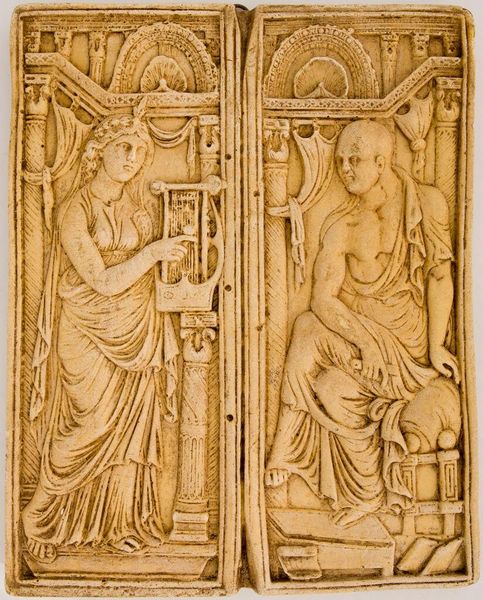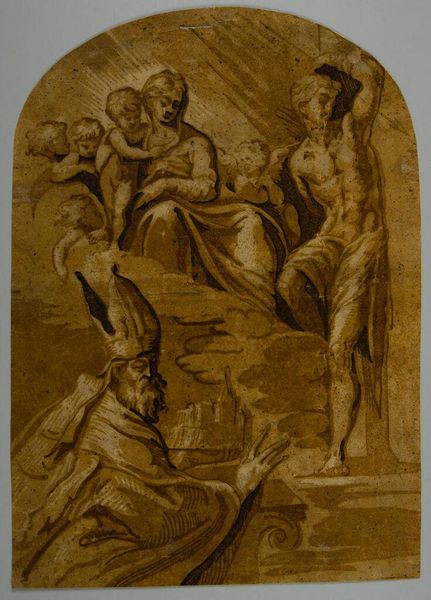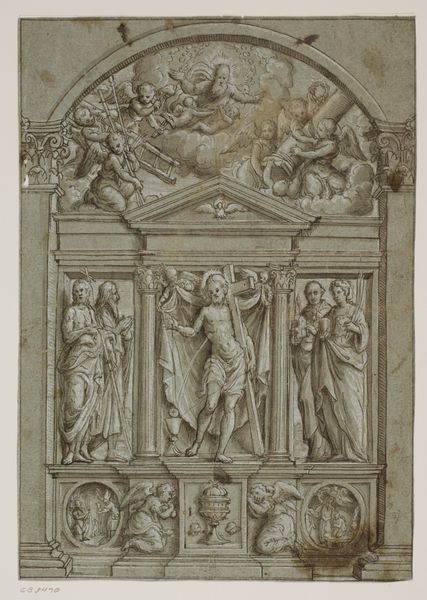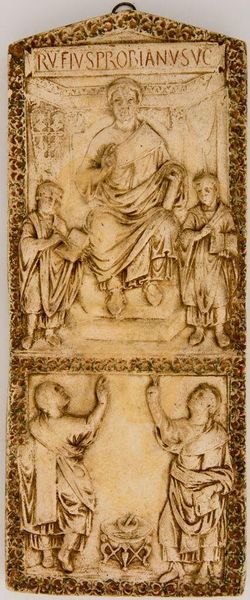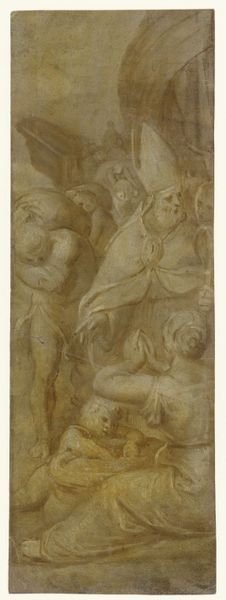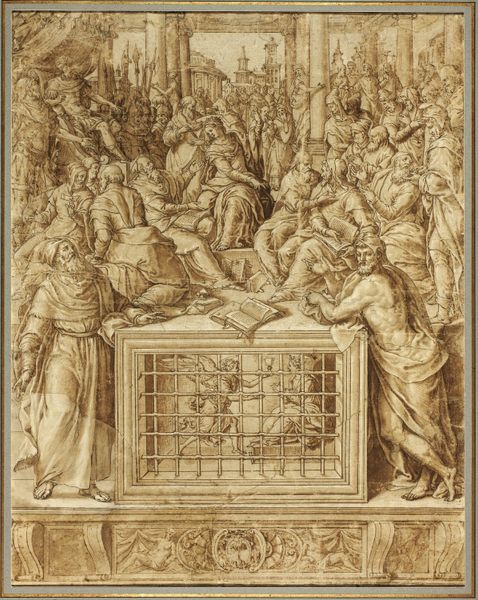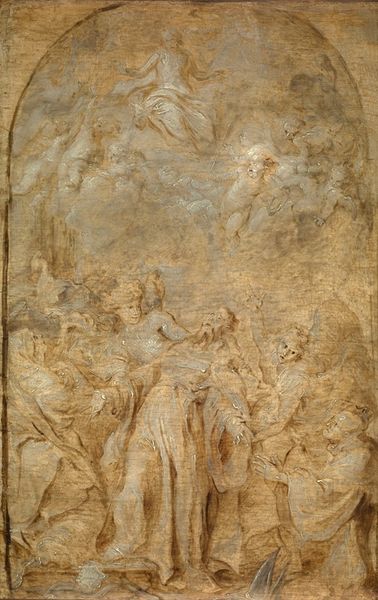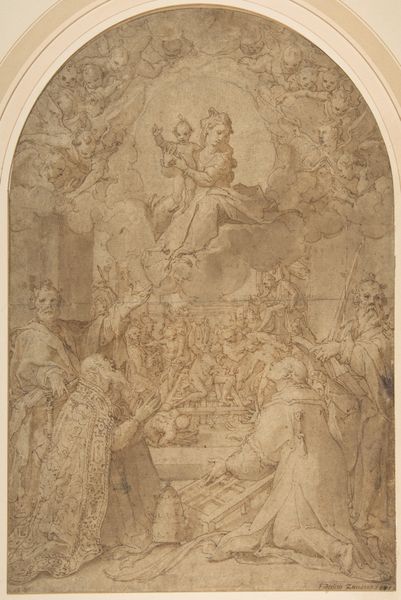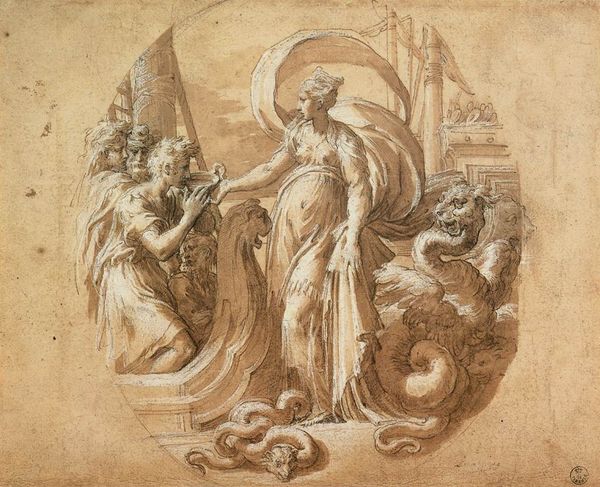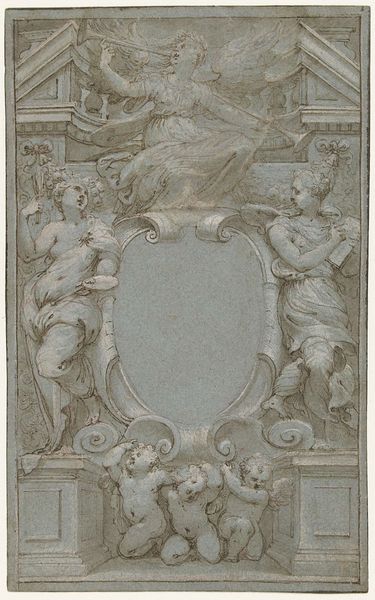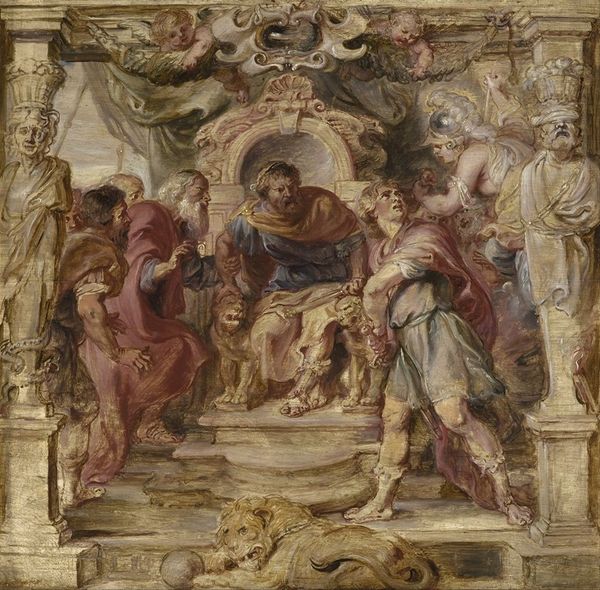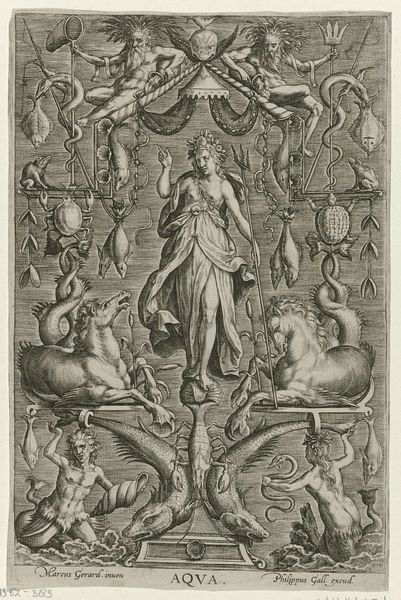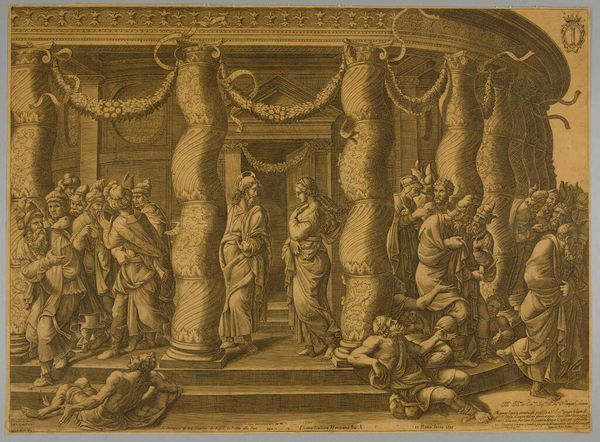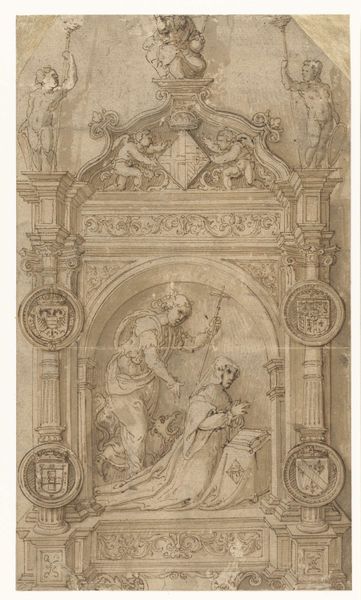
painting, oil-paint
#
portrait
#
allegory
#
baroque
#
painting
#
oil-paint
#
figuration
#
oil painting
#
history-painting
Copyright: Public Domain: Artvee
Editor: Here we have Peter Paul Rubens' oil painting, "Title Page for 'Sarbievii Lyricorum libri IV'," created in 1632. It strikes me as quite formal, almost like a stage set. The figures flanking the structure have very static poses, yet something about their gestures feels meaningful. What do you see in this piece? Curator: Absolutely. The composition stages a power dynamic of knowledge and cultural capital in the 17th century. This isn’t just an image; it’s a statement about the relationship between artistic production, patronage, and political authority. Consider the historical context: Rubens, beyond being a painter, was a diplomat deeply embedded in the power structures of his time. The "Sarbievii Lyricorum libri IV" was a collection of poetry, so the painting can be seen as an allegorical frontispiece. Who are these figures to you? Do you perceive any inherent tension in their arrangement, perhaps tied to their gender or relationship to the central emblem? Editor: I hadn't considered Rubens' diplomatic roles and how they impacted his art. The figures almost seem like muses. The woman on the left seems to admire the crest, while the man on the right holds it carefully as though offering support. Is there something inherently gendered about these roles? Curator: Precisely! The active man, juxtaposed with a passive, receptive woman reflects the power relations and the historical view of men holding active authoritative roles in the public sphere of the arts and science while women acted more as a source of inspiration or conduits for their husband's work. In the foreground a baby lays curled in a basin; that seems intentionally positioned, right? Its interesting to see that its male; I wonder if this imagery suggests at all to the future readership and gatekeepers that will appreciate this title page? How does this reading affect your initial impression? Editor: It really transforms my understanding. I initially saw a formal composition, but now I recognize Rubens presenting an intentional and loaded message about gender, power, and even legacy. Curator: And understanding those social scripts gives us a deeper lens through which to consider this Baroque masterpiece.
Comments
No comments
Be the first to comment and join the conversation on the ultimate creative platform.
